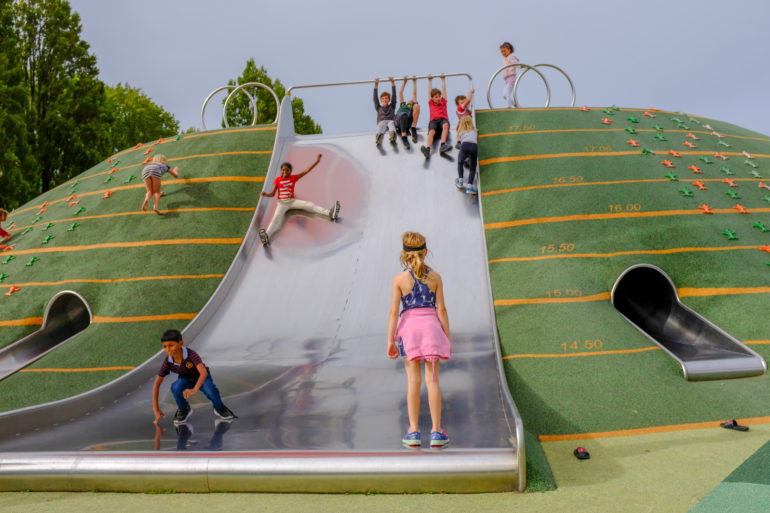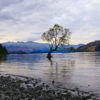What happens when children help design a playground? In Christchurch, New Zealand, we found out.
We never intended to visit Margaret Mahy playground. We were walking in the area, and from afar, we heard that type of laughter scream that only emanates from children having fun.
As we approached, we saw kids climbing through tunnels carved in the ground and running along colorful s-curved paths above everyone else. With the varying angles, bright colors, and contrasting shapes, it felt like an explosion of sensory stimulation.
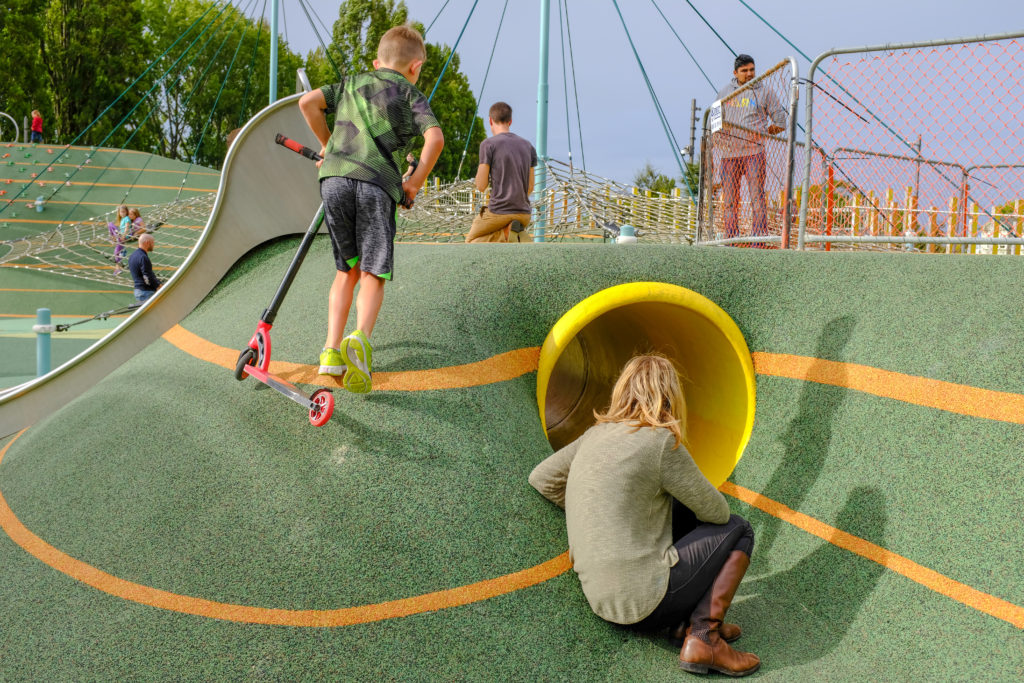
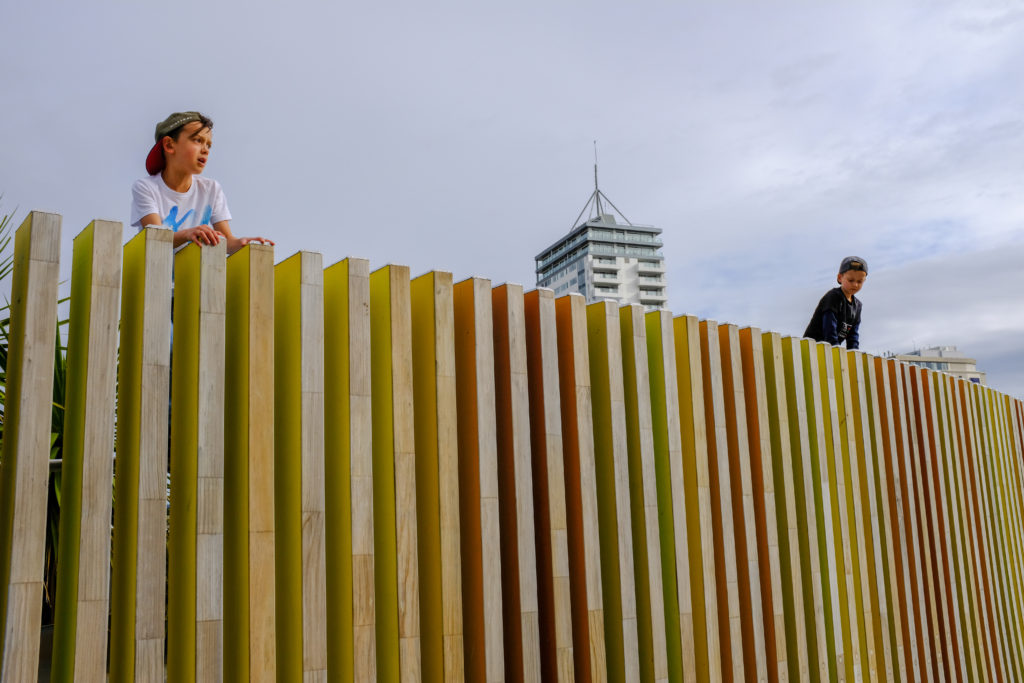
This playground, named after the local children’s book author Margaret Mahy, is currently the largest in the Southern Hemisphere and a true gift to the people of Christchurch.
After the 2011 earthquakes, which destroyed many parts of the city, this park was a priority for the residents in their rebuild. The government’s recovery plan included a “city-wide family playground,” so that locals would be encouraged to visit the city center following the natural disaster.
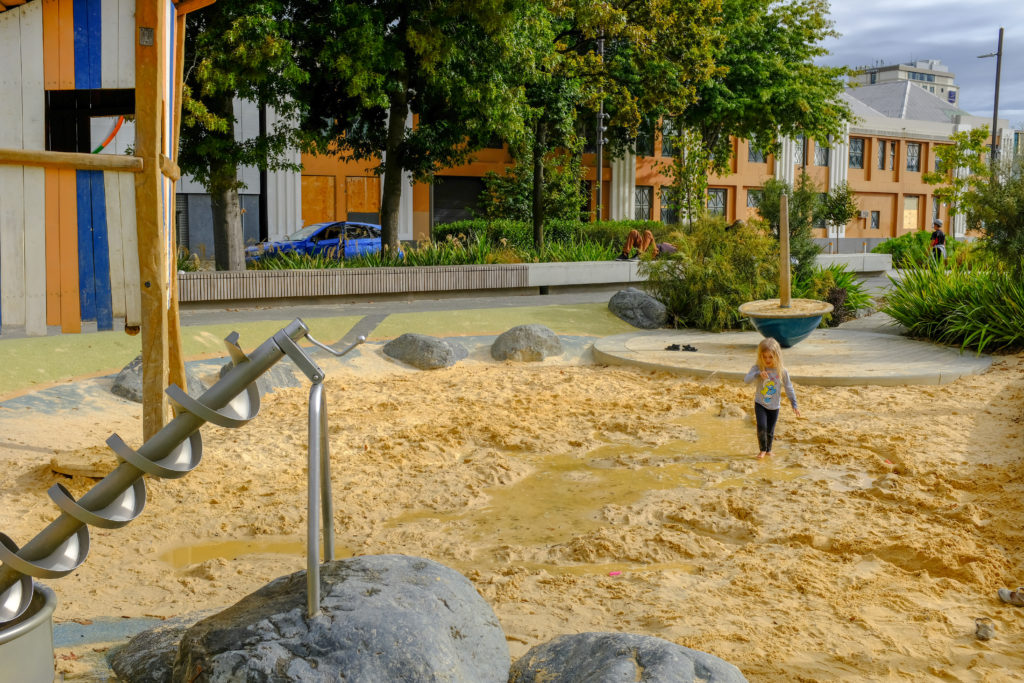
How did the designers create such a place of fun and joy? Well, to start with, they listened to the kids.
Through a competition, they asked over 6,000 children to share their vision for the most amazing place in the world.
The children shared ideas ranging from rocket ships to dragon-themed slides. While some of the ideas, like the name of the park, were fully implemented, the other ideas were used to help designers understand what kids really wanted from a playground.
Their insight? Children want physical challenge, a thrill.
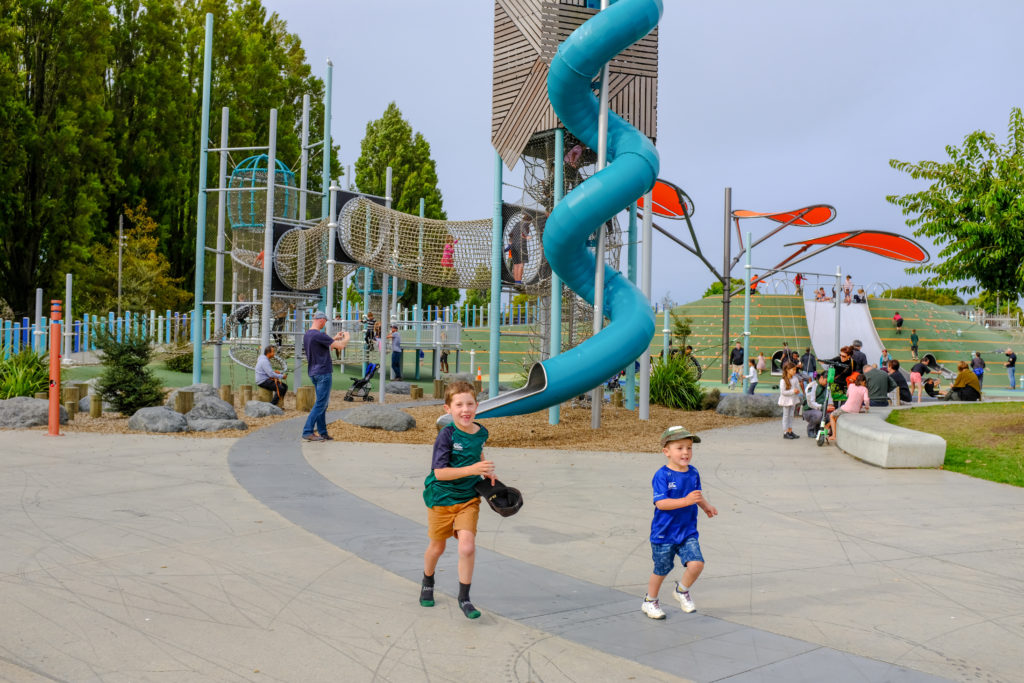
And that’s what the children got.
Not full-on danger by any means, but deliberately managed risk so that parents could rest easy. Sure, Margaret Mahy has the typical things you can find on a playground, like spinning swings and climbing nets, but they’re all taken up a notch.
Instead of a standard slide, you’ll find a curving blue one that towers over the playing children, or an extra-wide stainless steel one that can fit several kids at the same time.
Rather than just providing a giant sandbox, there is equipment that allows you to spray water in the sand, which instantly transforms it into something that feels like it’s by the ocean.
And then, there are things that are just plain exciting, that I definitely didn’t find at playgrounds where I played as a child: a long zipline where children took turns pushing each other down the hill, a water splash zone, and an actual climbing wall.
Essentially, it’s a kid’s paradise (and also one for adults, if you visit after hours).
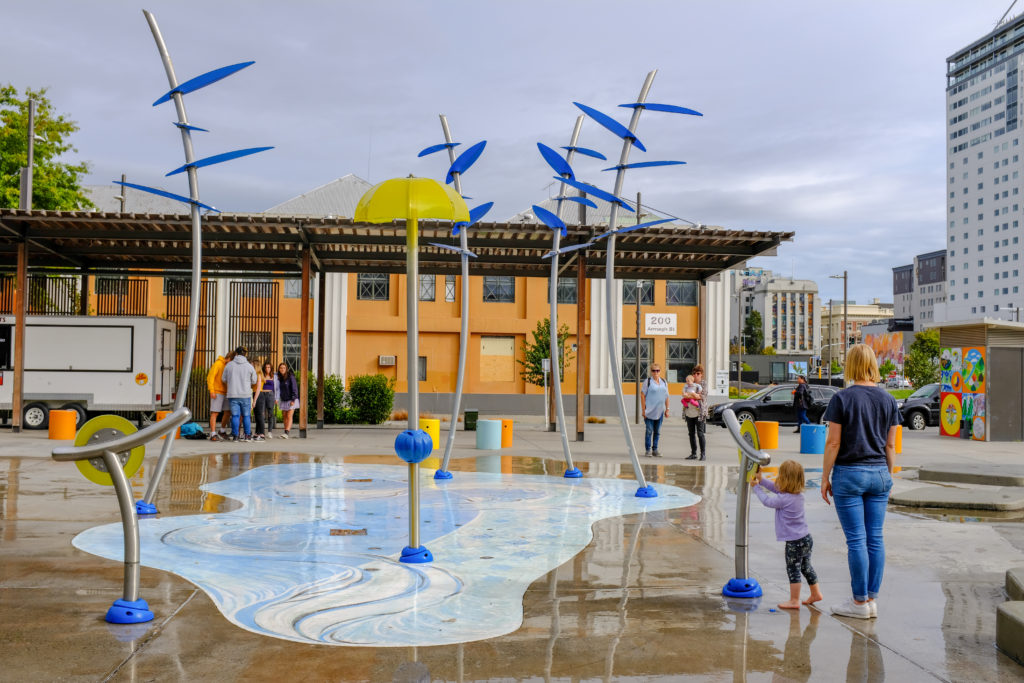
This playground was inspiring because it was a place of carefree bliss; a heartwarming reminder of the simplicity of childhood. It captures Christchurch’s spirit and its ability to have fun, at all ages, and it’s easily the most impressive playground I’ve ever witnessed.
It made me think about the possibilities for other playgrounds. So many are created by templates, the standard “playground in a box”—but this playground was special because it showcased the “crowd-sourcing” nature of Christchurch.
I’ve seen many other inspiring ones along the road (favorites include a volcanic themed space in Rotorua and a wooden, animal themed one in Nice).
I wonder how we can better design for play and joy in future environments we create, whether by taking input from the community around us, creating themes/storylines for a space, or capturing and creating pride around what makes the city or town in which we live unique.

